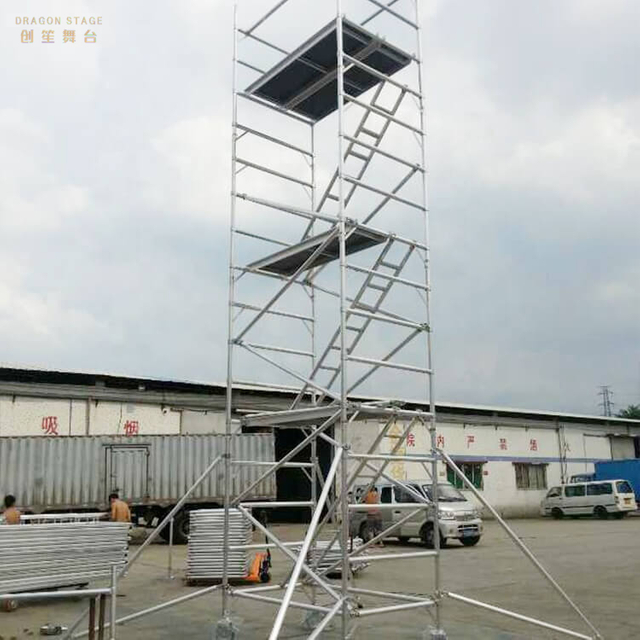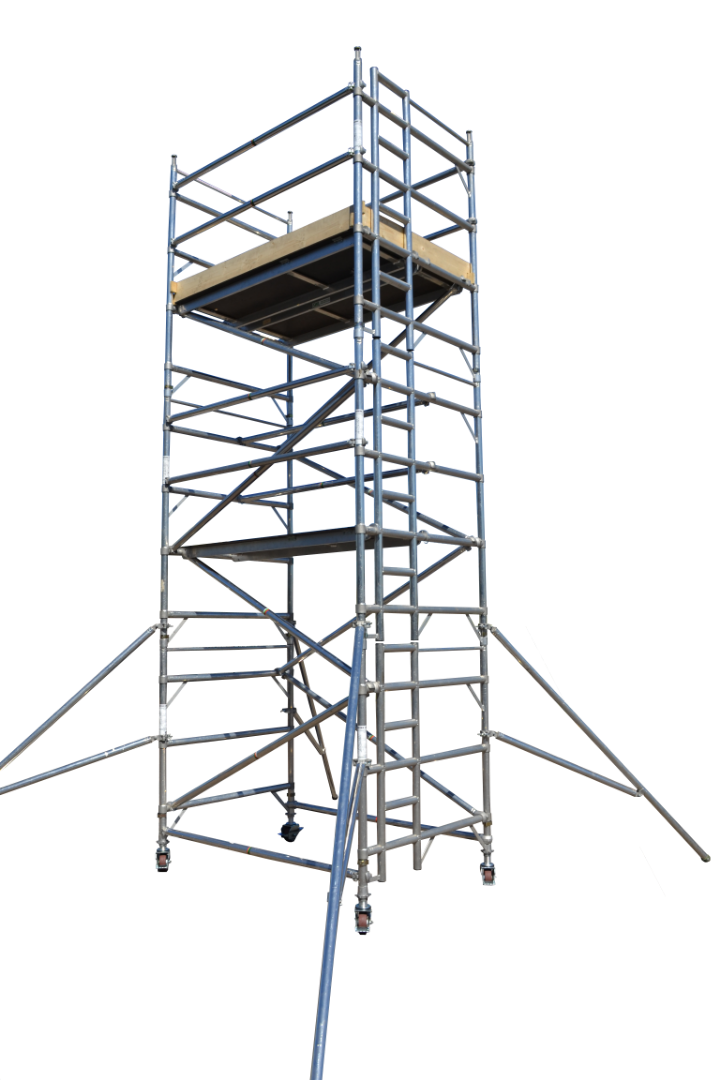Eco-Friendly Scaffolding: Sustainable Practices in Construction

Why Routine Scaffolding Examinations Are Vital for Your Project
Normal scaffolding inspections are essential for safety and project success. They guarantee architectural stability, identify concerns early, and stop hold-ups. Examinations focus on worker security, conformity with guidelines, and affordable practices. By purchasing routine checks, tasks run efficiently, fulfill industry criteria, and reduce long-lasting costs. Recognizing the significance of these assessments is vital to attaining efficient and durable building and construction outcomes.
Relevance of Regular Inspections
Routine evaluations of scaffolding are important to ensuring the safety and structural integrity of the building site. Besides the evident security benefits, these inspections likewise play a crucial role in improving effectiveness and maximizing the general job. By conducting regular look at the scaffolding, potential concerns can be identified and rectified quickly, stopping any delays or disruptions in the building and construction process. This positive approach not just assures a much safer working setting yet also adds to boosted performance by reducing the chances of unexpected issues emerging during the task.
Furthermore, normal examinations aid in maximizing the job timeline and budget. By resolving any architectural concerns beforehand, it is possible to avoid costly rework or hold-ups that may happen if problems are left ignored. This aggressive maintenance method can bring about smoother task implementation, conference due dates more effectively, and remaining within the allocated spending plan. Ultimately, investing time and sources in routine scaffolding assessments proves to be an essential element in making sure the success of any building and construction task.

Security and Mishap Avoidance
Guaranteeing the security of workers and stopping crashes is an extremely important priority in any building task, with scaffolding assessments playing an essential duty in preserving a safe workplace. Executing complete precaution is important to lessen threats and improve mishap prevention on building and construction websites.
Routine assessments of scaffolding aid identify possible dangers such as unsteady systems, inadequate bracing, or missing guardrails, allowing for prompt rehabilitative actions to be taken.
Safety measures throughout scaffolding examinations include looking for correct assembly according to producer standards, guaranteeing adequate weight-bearing capability, and verifying the security of the structure. Furthermore, checking for the visibility of slip-resistant surface areas, safe and secure gain access to factors, and ample autumn security systems is crucial in mishap avoidance.
Conformity With Sector Laws
In the domain name of building task management, adherence to market guidelines regarding scaffolding examinations stands as a crucial element of ensuring work environment safety and reducing possible dangers. Satisfying legal demands and regulative criteria is essential to assure that scaffolding structures are risk-free for workers to use. These laws are made to establish standards for the building, maintenance, and evaluation of scaffolds to prevent accidents and injuries on construction websites. By following these standards, project supervisors show their dedication to supplying a safe and secure work environment and minimizing the dangers connected with working at elevations.
Failure to adhere to legal needs and governing standards can result in severe consequences, including penalties, fines, and also work standstills. It is crucial for building and construction firms to stay informed about the most recent sector regulations and see to it that their scaffolding assessments are performed according to these standards. Regular assessments not just assist in maintaining conformity however additionally add to the overall performance and success of construction tasks by determining and resolving potential safety issues promptly.
Cost-efficient Procedures
Applying cost-effective measures in scaffolding evaluations is crucial for optimizing efficiency and maintaining safety standards on building websites. By investing in routine assessments, building and construction business can stop accidents and make sure that their scaffolding structures are protected and compliant with laws.
One cost-effective step is to train staff in-house to conduct regular examinations, reducing the demand for external inspectors and linked prices. Executing an aggressive maintenance routine can also increase performance by addressing small concerns prior to they rise, saving both money and time in the long run.
Utilizing innovation such as drones or specialized software application for inspections can simplify the process, making it more reliable and accurate. This not just lowers labor costs yet additionally boosts the total top quality of inspections. In addition, buying premium materials at first may seem a lot more costly, however it can stop crashes and the demand for frequent repairs, ultimately conserving money in the long-term.
Prioritizing economical actions in scaffolding examinations is an aggressive method that ensures a safe working environment, raises efficiency, and minimizes the threat of accidents on construction sites.

Long-Term Advantages
With a concentrate on durability and sustainability, focusing on cost-effective measures in scaffolding assessments not just assures safety but additionally yields substantial lasting benefits for building jobs. Making sure task efficiency and keeping structural stability are key elements that add to the success and durability of any type of building and construction endeavor. Here are 3 crucial lasting benefits of regular scaffolding inspections:
- Enhanced Task Performance: By carrying out routine inspections, prospective issues can be determined and dealt with quickly, minimizing the chance of pricey delays and revamp. This aggressive approach aids in preserving smooth development and conference task timelines efficiently.
- Maximized Architectural Integrity: Regular examinations help in spotting any signs of deterioration, making sure that the scaffolding system remains structurally sound throughout the project. This not only boosts safety for workers but also protects against any kind of unexpected failings that can cause costly damage or injuries.
- Cost Savings: Buying regular scaffolding examinations might sustain initial expenses but can result in considerable cost financial savings in the future. By determining and solving concerns early, major repair services or replacements can be stayed clear of, ultimately minimizing overall task costs and making best use of returns on investment.
Regularly Asked Concerns
Can Scaffolding Inspections Be Conducted by Anybody on the Building Website, or Is a Licensed Expert Required?
Scaffolding assessments ought to be conducted by licensed professionals because of the intricacy and security dangers involved. While do it yourself examinations may appear economical, the experience and training of a licensed professional warranty complete and exact assessments.
What Are Some Typical Issues That Can Develop During a Scaffolding Inspection?
During a scaffolding assessment, usual issues include scaffold stability, fall defense procedures, system honesty, and guardrail elevation compliance. These facets are essential for making certain the safety and security of workers and the structural stability of the scaffolding system.
How Typically Should Scaffolding Inspections Be Carried Out on a Construction Task?
Scaffolding inspections ought to be conducted routinely throughout a construction project to assure precaution are fulfilled. The regularity of evaluations typically ranges from once a week to monthly, relying on task dimension, complexity, and laws.
Exist Any Particular Guidelines or Requirements That Scaffolding Must Fulfill During an Evaluation? rubbish chutes
Throughout a scaffolding examination, specific requirements and guidelines such as load-bearing ability, security, and protected anchorage must be fulfilled. Qualification requirements, safety measures, and addressing common problems guarantee compliance with safety guidelines and prevent crashes.
What Steps Should Be Taken if a Security Concern Is Determined During a Scaffolding Evaluation?
In the event of determining a safety issue during a scaffolding evaluation, strict safety methods must be adhered to. Implement instant rehabilitative activities, stop work in the afflicted area if essential, and initiate the emergency situation response procedures.
Verdict
In summary, regular scaffolding examinations are important for ensuring safety, conformity with policies, cost-effectiveness, and lasting project advantages.
By performing detailed and routine assessments, prospective threats can be recognized and dealt with promptly, preventing mishaps and ensuring a smooth job implementation.
Following industry laws is necessary for maintaining requirements and staying clear of legal problems.
Carrying out these measures can eventually bring about a successful and efficient task end result.
